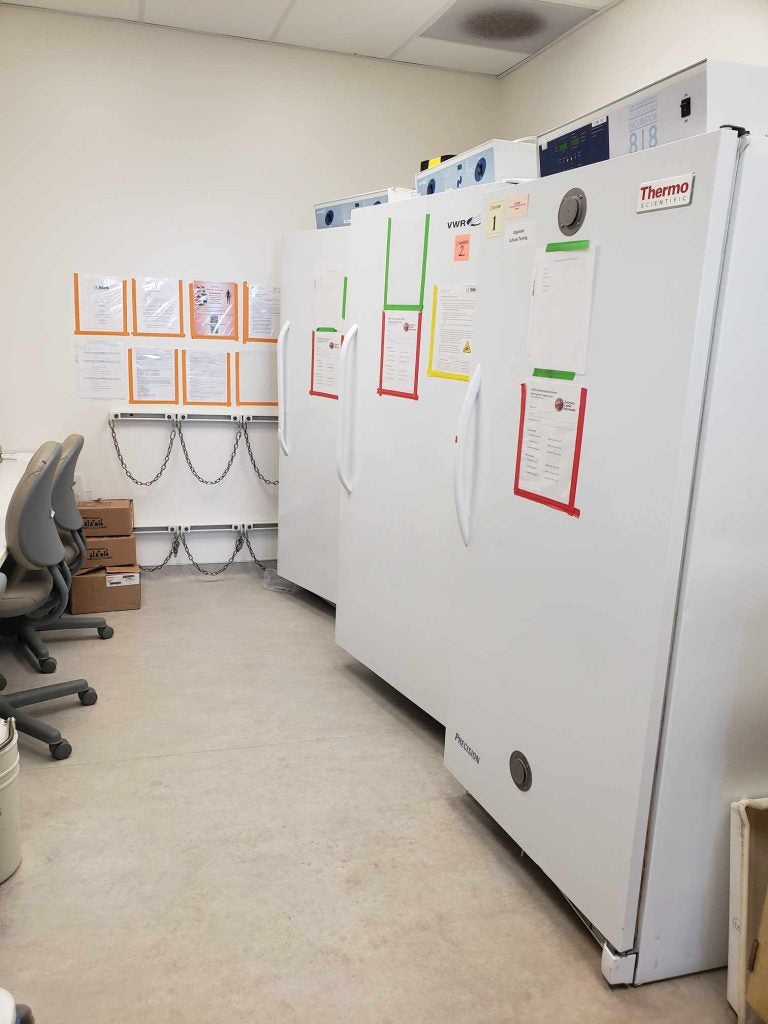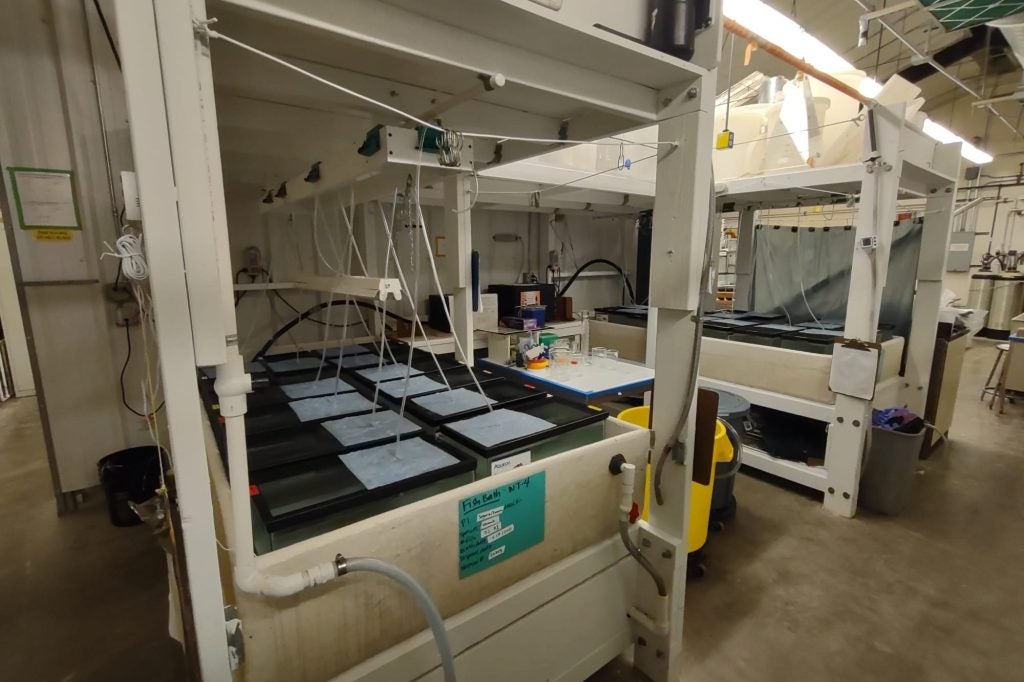| Address: | Dr. Amelie Segarra Room 3205, Vet Med 3B 1089 Veterinary Medicine Drive Davis, CA 95616 Click here for map and directions |
| Phone: | (530) 752-7529 |
| Email: | Dr. Amelie Segarra: asegarra@ucdavis.edu |
Facilities
The Segarra lab is located at the UC Davis School of Veterinary Medicine in the Veterinary Medicine 3B (VM3B) building and at Center for Aquatic Biology and Agriculture. See below for more details.
Veterinary Medicine 3B
We are located the School of Veterinary Medicine on the UC Davis campus, Vet Med 3B building, 3rd-floor. Our lab consists of an open laboratory collaborative model with specialized rooms for exposures during early stages of fish life, behavioral assays, microscopy as well as an open space with laboratory bench stations and a Zebrafish Vivarium.
The lab is fully equipped for all aspects of molecular biology and enzyme immunoassay. We have a fully automated nucleic acids extractor, a Real-Time PCR used for pathogen detection or gene expression, a thermocycle, PCR hoods, and tissue homogenizer as well as a plate reader, centrifuges, two biosafety cabinets and a fume hood.
Our laboratory is also equipped with two DanioVision Chambers connected to EthoVision software allowing animal tracking from live video feed to determine behavior alterations including social interaction tracking, anxiety-like behavior, exploration and swimming patterns. We also have a Leica S8 APO Stereo Microscope to evaluate embryonic morphological development.
We also have access to high-performance computing for all our sequencing, transcriptomic, and metagenomic analysis.






Center for Aquatic Biology and Agriculture

Our non-model and endangered fish species such as juveniles Delta Smelt, Longfin Smelt, Steelhead, Chinook Salmon or Coho Salmon are located at the Center for aquatic Biology and Agriculture (CABA). At CABA, our lab consists on a specialized room to perform physiological and behavioral endpoints across various life cycles. We also have access to Butler style buildings dedicated for aquatic toxicology and, disease and pathology studies. Numerous tanks and tank systems are available both inside and outside. Tank sizes range from small 2 ft. diameter tanks to our largest at 24 ft. in diameter.



